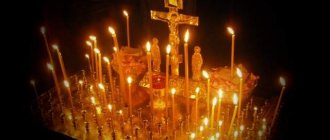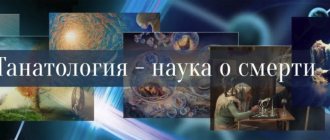Reincarnation is the stage of life formation between the death of one body and the relocation of the soul to another. This process was described by many religions and religious teachings, which undoubtedly gave rise to the popularity of the theory. Soon the idea of the transmigration of souls began to cover the whole world, and the number of followers grew at an incredible pace.
How is it justified? What prerequisites existed for its formation? If you are interested, we will be happy to explain! In this article we will move from the creation of this theory to its material component. Don't worry, it will be very interesting!
Islam
We are used to thinking that in Islam there is no concept of transmigration of souls. Theologians are divided into two camps. Some say that there is not a word in the Koran about being born in a new form. Others - that some lines are a direct reference to reincarnation.
Abrahamic religions are monotheistic beliefs that assume the existence of One God. These include Christianity, Islam and Judaism.
According to the teaching, the incorporeal shell ends up in the Court of Angels, who decide its future fate. The messengers of Allah send the infidels to Jahannam (analogous to Hell). As in Christian mythology, sinners suffer torment in this inhospitable place.
According to legend, Angels themselves come for devout Muslims and escort the worthy to heaven, where they enjoy Heavenly blessings.
Staying in Heaven or Hell is temporary. As in the Christian concept, souls await the final decision of their fate at the Last Judgment.
The works of the Persian philosopher, mathematician and poet Omar Khayyam also contain reflections on posthumous travel. Khayyam is religious: he believes in the existence of the Creator and devotes many lines to His wisdom, insight and mercy.
Quote from Omar Khayyam
In his poems, the thinker touches on the eternal question: what is there, beyond the invisible line.
We will never enter this world again,
We will never meet our friends at the table.
The poet is sure: life is given only once, appreciate every moment.
The video presents real facts about past life memories:
Reincarnation and déjà vu
Have you often encountered a situation where it seems like something similar has already happened in your life? Such a sharp and unexpected feeling, filled with deep thoughts and worries? We think you have already answered “yes” in your heart. Some religious movements explain this feeling called “déjà vu” from the point of view of reincarnation.
“The world is cyclical,” we often hear throughout our lives. Indeed, many events literally happen in circles. So deja vu is an echo of a past life, existence in another time and place. All “random” events, if you had this feeling, occurred during early life. A walk with friends, first love, injuries, and so on. All this could somehow remain deep in the soul, so deep that even physical death is of no concern! Therefore, it is often recommended to trust your feelings, because they store the experience of your past life!
Christianity
Rejects the concept of rebirth. Faith does not imply subsequent incarnations: there is only one attempt. The cult denies correcting mistakes: some will go to fiery Gehenna, others to Paradise.
Christianity categorically rejects the reincarnation of souls
According to legend, both subtle and physical bodies will rise from oblivion.
The Christian rite of burial in the ground and the denial of cremation are based on the principles of resurrection in the flesh. The physical shell remains intact. This belief gave rise to dangerous superstitions. Religious fanatics still prohibit the amputation of limbs and blood transfusions. Even for medical reasons.
Helena Blavatsky says that the Bible initially talked about reincarnation. Mention of her disappeared in the first century AD. Later revisions and additions changed the Scriptures.
As for the personality of the Savior, in 325 at the First Council of Nicaea, Jesus was elevated to the rank of God. After this, the image became generally accepted for worship. The figure of Christ is real, but for the Jews Jesus is just the Messiah, the Prophet.
Transmigration of souls after death
Each of us has a soul, which is an energy and information object. It represents a body with the memory of the incarnation of people in the present, starting from birth and ending with the current moment. And accepting the fact that people have such a previous incarnation, it can be argued that there is also a body of memory, the spirit of the same incarnation. And this entire chain of transitions of energy bodies with the memory of their past lives is twisted along the spiral into a kind of spherical object of material origin. However, this type of matter exists on a completely different plane - this is a causal body, which is nothing more than the Spirit of man. From which it follows that the components of the Spirit are Souls (memory bodies) that lived in the past. Thus, reincarnation is the transformation of the Spirit and the transmigration of souls. After all, by Spirit we mean a structure that exists outside the boundaries of time. While the Soul has temporary boundaries of its life, which are determined by the duration of a specific incarnation.
Read our article “A rosary made of 108 beads: symbolism and practical application.”
The following laws of reincarnation exist:
- In the process of transforming the Spirit from one physical shell to another, the gender of people usually changes. Thus, the acquisition of experience in incarnations alternates. If in the current life a person belongs to the female gender, then in the next incarnation the spirit lives in the physical body of a man. And vice versa. According to the theory, by alternating gender a polar and balanced set of spiritual experiences is achieved. This means that when the question of gender in a past life arises, one should use the above-mentioned principle of cyclical incarnations.
- However, not everything is so simple and unambiguous. If the closure of the previous incarnation (in other words, the soul of a previous life) is incorrect or incomplete, during reincarnation the effect of receiving “greetings from the past” is possible. This can be manifested in a split personality, an excessive presence of masculine qualities in the bodies of women of the current incarnation (and vice versa).
- In the process of reincarnation, everything happens according to the laws of increasing the level of fullness of vitality, which is looking for a free outlet for manifestation (vitality). Thus, there is no reverse transition of souls from people to representatives of the animal world or insects during subsequent reincarnations. At the same time, the movement of souls from animals into the human body is considered a pattern. This process occurs as spiritual growth and development occurs.
Manichaeism
The doctrine arose in the 3rd century. The Persian poet Mani is considered the founder. He called himself the last Apostle of Light and tried to create a unified doctrine by collecting the beliefs that existed in his era.
Prophet Mani
The philosopher was convinced that all religions are one, because they were sent down to Earth by the same divine spirit. People, in order to please their ambitions or desire for power, distorted the original idea of God.
From the point of view of its contribution to world philosophical movements, Manichaeism can be called a breakthrough in public consciousness. This is the first universal religion that attempted to reconcile the followers of Zoroastrianism, Christianity and Buddhism. The Manichaeans adhered to a dualistic concept of the Universe: there is a struggle in the world between dark and light forces.
Mani's followers did not exclude the possibility of transmigration of the soul and posthumous incarnations. Manichaeism can be spoken of as a synthesis of the theological ideas of humanity. But the orthodox to this day consider it heresy.
Where did the doctrine of reincarnation come from?
Find out what awaits you today - Horoscope for today for all zodiac signs
Due to numerous requests from subscribers, we have prepared an accurate horoscope application for mobile phones. Forecasts will arrive for your zodiac sign every morning - it's impossible to miss! Download for free: Daily Horoscope 2020 (available on Android)
The doctrine of reincarnation appeared a very long time ago. Many thinkers of early Greece and Rome addressed people with this idea. Interestingly, she instantly won support from the population, which allowed her to gain worldwide fame. Later she “moved” to Judaism, from where she came to Christianity and spread to all world religions.
Buddhism
The religious concept of Buddhism has its roots in Hinduism. These currents are similar in their worldview. The theory of transformation and reincarnation is dominant. There is no death, there is an infinite number of lives to fulfill karmic destiny.
Reincarnation in Buddhism
To break the chain of rebirths is to reach the highest point of existence. To go beyond the physical shell forever is what you need to strive for.
The video is dedicated to the role of Buddhism in the modern world:
According to Buddhists, each subsequent incarnation depends on the previous one. The more mistakes we make, the more often we will return to correct them. After the death of the Enlightened One, his followers created 18 separate schools that interpreted the teachings differently.
Buddha said that the spirit is a substance over which decay and decay have no power. Hindus, on the contrary, assured that everything has a beginning and a logical conclusion. Northern Buddhism originates from the Mahayana traditions. This doctrine introduced the concept of the Bodhisattva. It denotes those who achieved enlightenment, but did not go into Space, but remained to seek the Truth. In Tibetan tradition, this is the Dalai Lama. He returns to Earth in human form.
Mountain peak Kailash is a cult place for those seeking harmony. Millions of tourists flock to Kailash during the Tibetan holiday Saga Dawa. Buddhists believe that Buddha lives here in one of his incarnations - Samvara.
Legends are made about the mountain. The world will change for the one who submits Kailash, because according to legend, it is not accessible to anyone.
Proponents of the theory of transmigration
The theory of transmigration, or metempsychosis, as many philosophers call it, being original, teaches about the relocation of the soul from one body to another after death, or in other words, this means that the soul, after staying in one particular body for a certain time, leaves it by the time death in order to continue existing, receiving further life experiences, in another body - be it a person, an animal or an angel - which is ready to accept this soul.
Moreover, supporters of metempsychosis believe that it is quite possible, after being in an angelic form, to return to the human plane again and then be born in the form of an animal. In addition, the migrating substance, having well-defined qualitative and quantitative characteristics, chooses a form according to its tastes, desires and inclinations. A similar idea prevailed among the ancient Egyptians, who believed that the soul of the millennium, departed after death, travels from one body to another, trying to enrich itself with the experience of all beings at each stage of life.
And remembering the Greek philosophers, we will also find supporters of the theory of metempsychosis or transmigration of souls. These are Pythagoras, Plato and their followers. Pythagoras says: “After death the rational mind, freed from the bonds of the body, becomes ethereal and passes into a certain region where it remains until it is sent back to inhabit some other body of man or animal. Having undergone a series of purifications and becoming sufficiently perfect, he moves to the gods and returns to the eternal source from which he originated. Plato also supported metempsychosis. Of course, we cannot say exactly where such ideas came from to Pythagoras and Plato. Some believe that they studied Egyptian doctrines. Others think that they learned the theory of transmigration directly or indirectly from India.
Judaism
Religion does not deny the possibility of the spirit returning to earth repeatedly. There is no direct reference to this fact in the Old Testament, but it is implied in some passages of the Book.
Jewish theology holds that questions related to rebirth are beyond the control of the mind of the uninitiated. The concept has three possible resettlement options.
- The insertion of a new soul into a baby while still in the womb.
- The entry of a spirit into an adult so that he can fulfill a certain mission.
- Incorporating an evil creature into the mind that pushes you to do bad things.
In the third case, as in the Christian tradition, the person is recognized as possessed. Possession is caused by the penetration of lower astral entities into the aura, which enslave the will and mind. Similar cases are described not only in Jewish and Christian demonology, but also in Islam. Evil spirits - genies - deceive the bodies of the naive.
Flower of life Sephiroth. In Jewish mysticism there are ten creative forces, ten emanations
The idea of reincarnation is fully supported by Kabbalistic teachings. Followers of the mystical movement remember past lives with the help of spiritual practices.
Hypnotic meditation to remember past lives:
The emergence of reincarnation
The first mention of reincarnation is in Brihadaranyaka (III, 2, 13; IV, 4, 5); among the Indo-Aryans, this teaching appeared in the period separating the Rig-Veda from the early Upanishads (XIV-XV centuries BC) . Perhaps it was borrowed from the pre-Aryan population of India, where it had been kept since primitive times. This can be indirectly confirmed by the fact that in primitive cults this belief is found much more often than among historical religions. Reincarnation has the most vivid form among Australians. The emergence of the belief in reincarnation was probably influenced by the similarities between descendants and ancestors, which were sometimes especially striking in the third generation. In fact, the birth of a child, in many ways similar to the deceased grandfather, could involuntarily lead to the idea of a new incarnation of the deceased. So, in Africa, in the Yoruba tribe, a newborn was greeted with the words: “You have returned!” [4, p. 191]. The source of this belief may also have been totemism - the concept of a mystical connection between a tribe and a certain animal ancestor. In Australia, some clans had the idea that their members were the embodiment of totemic ancestors. Primitive people had a keen sense of the spirituality of nature, but at the same time they were poorly aware of the qualitative difference between the human spirit and the animal psyche. This idea fueled the belief in reincarnation and contributed to the transfer of the human “I” into the animal shell. But both totemism and animism are still only the embryos of reincarnation.
Chinese philosophy
Residents of the Celestial Empire reject posthumous return to the body. The Chinese believe that after the end of the earthly journey the spirit continues to exist, but in a different form. He has a long journey ahead of him in the afterlife, and he needs to prepare during his lifetime.
This explains the magnificent burials of royalty and nobles: things needed “in the next world” were placed in the tomb. The richer a person was in this world, the more he took with him to the grave.
Ancestor cult in China
The Chinese have a developed cult of ancestors: they believe that ancestors become guardians of living family members. The great sage Confucius, who became the founder of the philosophical movement, believed that it is not possible for us to comprehend the mysteries of birth and departure.
If we know so little about life, what can we know about death?
Dalai Lama
In countries where Lamaism is the official religion, the fact that a person appears in a new body after death is recognized at the state level. The Dalai Lama himself chooses his future appearance. The monks are faced with the task of finding a child into whom the deity will incarnate. The choice is made according to certain criteria: date, time and place of birth are important.
14th Dalai Lama
Lama is the earthly incarnation of the Bodhisattva. According to legend, the creature became Buddha to take care of people. The current Dalai Lama was born in 1935 in Tibet. This is his 14th incarnation as Tenzin Gyatso.
Humanity has gone through a difficult path of formation and development. I learned about how the world works, discovered Space and split the atom. But the questions of the posthumous path of the soul are still relevant. The Bible says that everyone will be given according to their faith, which means that the theory of reincarnation leaves hope for the best.
Tags: Astral, Reincarnation
About the author: Evgeniy Tukubaev
The right words and your faith are the key to success in the perfect ritual. I will provide you with information, but its implementation directly depends on you. But don’t worry, a little practice and you will succeed!
- Related Posts
- What does it mean if a person has a black aura?
- What do dream hackers do and how can you join them?
- What prayers are read after the death of a person on the 3rd, 9th and 40th day
« Previous entry
Early Christianity
Perhaps the early Christians taught about metempsychosis? Helena Roerich states: “The doctrine of reincarnation was abolished only in 553 AD at the Second Council of Constantinople” [3, p. 110]. This is an absolute lie. There has never been a doctrine of reincarnation in Christianity, and at the Second Constantinople (Fifth Ecumenical) Council it was not even discussed or condemned. The following were condemned: the idea of the pre-existence of souls; the idea of receiving a body with a soul as punishment; the idea that angelic souls can pass into human bodies and vice versa; the idea of the final disappearance of matter and universal salvation [3, p. 111].
The idea of metempsychosis was so alien to the internal life of the ancient Church that there was no need to seriously struggle with it. One of the first Christian theologians, Athenagoras (2nd century), quite clearly expresses the Christian hope: “So that the same body will receive the same soul...” (On the Resurrection of the Dead, 25) [1, p. 11]. Christians throughout history have believed in the resurrection of the same bodies, not reincarnation. St. Justin Martyr (+166) was a Platonist before converting to Christianity. The old man who converted him unfolded before him the arguments in favor of the new faith and concluded: “So, souls do not pass into other bodies... - You speak rightly, I said” (Conversation with Tryphon the Jew, 4) [1, p. 12]. For Tatian, the idea of reincarnation causes a smile: “I laugh at the women’s tales of Pherepides, Pythagoras, who accepted his opinion, and Plato, who was their imitator” [1, p. 16]. Extensive criticism of the transmigration of souls is found in Irenaeus of Lyons and Tertullian. The rest of the church writers believed that this idea was far from the minds of Christians.
Theosophists also like to cite Origen as an example, supposedly to prove the existence of the doctrine of metempsychosis within the Church. In fact, Origen only suggested the pre-existence of the soul before birth in the heavenly spheres, but not about reincarnation. He did not consider this opinion a dogma, but put forward it as a hypothesis. Origen spoke out quite clearly against metempsychosis itself (Against Celsus, III, 75, IV, 17) [4, p. 190].











